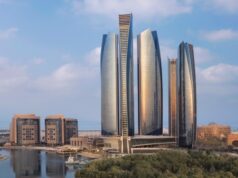LAS VEGAS—Like a professor teaching his students, Kip Richardson taught a little bit of Sustainability 101 during “Beyond Green: ‘The Talk,’” at the HD 2007 Expo and Conference. A packed room of attendees listened to Richardson, director of business development for Portland, Ore.-based Ankrom Moisan Architects.
What is sustainability? Richardson said it is “development that meets the needs of the present without compromising the ability of future generations to meet their own needs.”
“Sustainability touches everybody,” Richardson added. “This is not a political issue. It is a human issue. Almost every hotel brand is talking about it, and there is a consumer demand for it. We are in the middle of a paradigm shift.”
Richardson described how companies that embrace sustainability will benefit.
“Companies will have a mission and purpose,” he said. “It will help in recruiting and there will be opportunities in branding and marketing for sustainable design products and services.”
LEED’s Impact Addressed
Those companies that participate in the Leadership in Energy and Environmental design (LEED) program will create buildings that are better assets and more efficient, Richardson said. He added that just a few U.S. hotels are currently LEED certified but 46 have registered to be reviewed for certification. He emphasized the need for the U.S. Green Building Council, the creator of LEED, to establish a certification program specifically for hospitality.
Looking into the future, Richardson predicted that some buildings will become “living,” meaning that they will produce their own power, reuse rain water and possibly even be used to grow food.
Following Richardson’s session, a follow-up “Beyond Green: ‘Walking the Talk’” panel discussion focused on sustainable design challenges such as purchasing. William Langmade, president, Purchasing Management International, said there are not many green standards for products. Some products come with far too much packaging, which creates a waste management issue, and renovations create huge volumes of waste. It is not always easy being green, he said.
“I can buy renewable wood that has no formaldehyde, and that is certified by the Forest Stewardship Council, but those products may be made in a Third World country in factories powered by polluting coal-fired power plants,” Langmade said.
“Are we walking the talk?” he asked. “We are still crawling.”
Cultural Differences Slow Efforts
Kajsa Krause, principal, DNA, who is from Sweden, said conservation is not accepted as easily by Americans for cultural reasons. Europeans are used to living in smaller spaces with fewer resources and know how to save, she said, whereas Americans have grown accustomed to living in wide open spaces, which makes sustainability a greater reach.
Damin Tarlow, an architect with Gerdling Edlen Development, whose company has set a minimum LEED gold goal for its projects, advised designers in the audience to have a frank discussion with developers up front to determine what their payback expectations are for LEED-certified buildings.
“Ask what their threshold for payback is,” Tarlow said.
Carolyn Forsyth, architect and Green Team director, Ankrom Moisan Architects, said she expects the growth in sustainable building in the future to be exponential.
Glenn Hasek can be reached at editor@greenlodgingnews.com.








